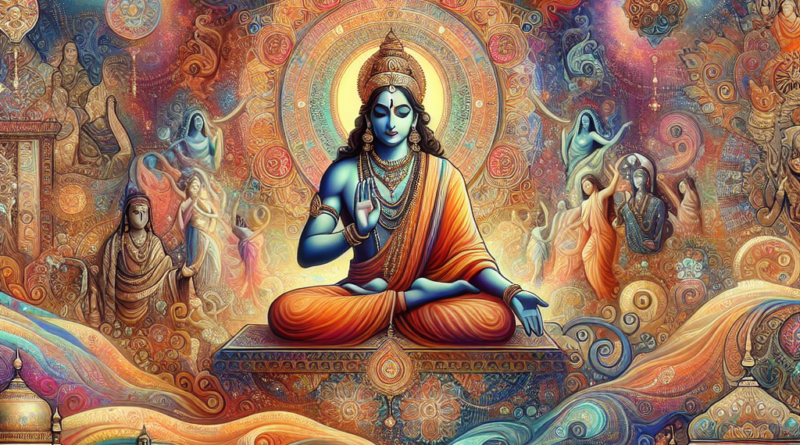Unveiling the Path of Devotion: Bhakti Yoga Explained
Title: Bhakti Yoga Explained: A Path of Devotion in Hindu Culture and Indian History
Bhakti Yoga, one of the main paths of spiritual practice in Hinduism, holds immense significance in Indian culture and history. Rooted in the concept of devotion, Bhakti Yoga emphasizes a deep love and connection with the divine, leading practitioners towards spiritual realization and union with the ultimate reality. This article explores the historical context, cultural significance, and contemporary relevance of Bhakti Yoga in the rich tapestry of Hindu mythology and Indian heritage.
Historical Context:
The roots of Bhakti-Yoga can be traced back to ancient Indian scriptures, including the Bhagavad Gita, the Upanishads, and the Ramayana. The Bhagavad Gita, a sacred text that serves as a philosophical guide, discusses the importance of devotion and surrender to the divine as a means to attain spiritual liberation. The Upanishads, a collection of texts that delve into the nature of reality and the self, also emphasize the power of devotion in spiritual practice.
Bhakti-Yoga gained prominence during the Bhakti movement, a social and religious movement that swept across India between the 7th and 17th centuries. This movement emphasized the accessibility of divine grace to all individuals, regardless of caste, gender, or social status. Bhakti poets and saints such as Mirabai, Kabir, and Tulsidas played a significant role in popularizing Bhakti Yoga through their devotional songs and verses that spoke of love, surrender, and union with the divine.
Cultural Significance:
In Indian culture, Bhakti-Yoga is deeply ingrained in daily life and rituals. It is reflected in the devotional practices performed in temples, homes, and sacred sites across the country. Bhajans (devotional songs), kirtans (musical chants), and aartis (ritual offerings) are common expressions of Bhakti Yoga that evoke a sense of connection and reverence towards the divine.
Bhakti Yoga also plays a vital role in shaping the spiritual and moral values of individuals in Indian society. The teachings of Bhakti emphasize love, compassion, humility, and selflessness, guiding practitioners towards a life of service, devotion, and inner transformation. Through the practice of Bhakti Yoga, individuals cultivate a deep sense of gratitude and reverence for the interconnectedness of all beings and the divine presence in every aspect of existence.
Contemporary Relevance:
In today’s fast-paced and materialistic world, the practice of Bhakti Yoga offers a sanctuary of peace, solace, and spiritual fulfillment. Many individuals turn to Bhakti-Yoga as a means to cope with the stresses of modern life, seeking comfort and guidance in the embrace of divine love and grace. The timeless wisdom of Bhakti teachings continues to inspire and resonate with people of all backgrounds, fostering a sense of unity, harmony, and compassion in an increasingly divided world.
Moreover, Bhakti-Yogas serves as a powerful tool for promoting social harmony and inclusivity. By emphasizing the universal nature of divine love and the equality of all beings in the eyes of the divine, Bhakti Yoga transcends barriers of caste, creed, and culture, fostering a sense of unity and brotherhood among humanity. This inclusive and egalitarian ethos of Bhakti Yoga is particularly relevant in today’s multicultural and diverse societies, offering a message of unity in diversity and respect for all paths to the divine.
In conclusion, Bhakt-Yogas stands as a timeless path of devotion that holds profound significance in Hindu culture and Indian history. Its teachings of love, surrender, and selfless service continue to inspire and guide individuals on their spiritual journey towards union with the divine. As we navigate the complexities of the modern world, the practice of Bhakti Yoga serves as a beacon of light, offering solace, wisdom, and a sense of connection to the eternal source of love and grace.

